Arrowroot indoor plants: varieties and care
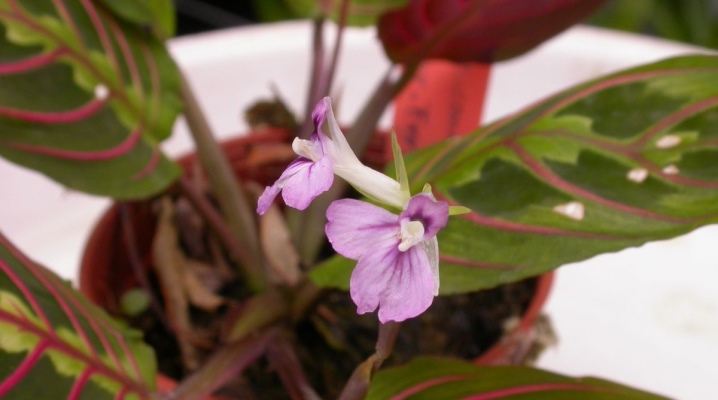
Arrowroot indoor plants are herbaceous perennials with very showy and bright leaves. Their colors can be varied, from the lightest green, almost white, to very dark. At the same time, flowering is absolutely nondescript. The family has about four hundred species and originates in the tropical strip of South America.
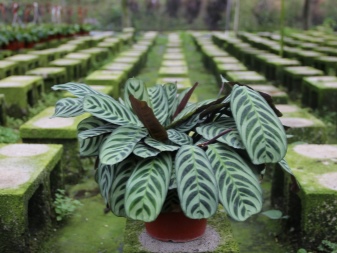
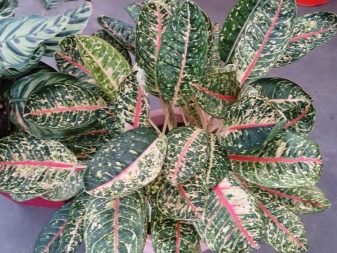
general description
A distinctive feature of the arrowroot family is rather large leaves. Their shape can be either oval or oblong. The surface is distinguished by an original bright pattern with various spots and stripes, which makes the plant look like an artificial one.
Also among the features can be noted underground rhizome. Shoots are slightly shortened, and rosettes of leaves are located on rather long petioles. Since the plant cannot please the grower with bright and beautiful flowers, the emphasis is on the decorative effect of the leaves.
Of all the indoor varieties, the only one that can boast a rich and eye-catching flowering is the saffron calathea.
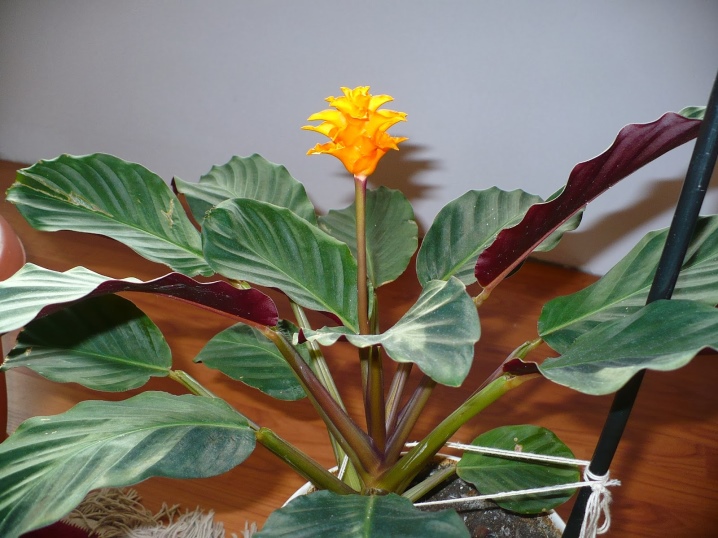
Some flower growers prefer to call arrowroot prayer plants. There is an explanation for this. If the level of lighting changes, for example, before the rain or in the evening, arrowroots raise their leaves up, like hands in prayer. Another feature is that the plates are constantly facing the sun. They unfold behind the sunlight with the help of special thickenings at the base.
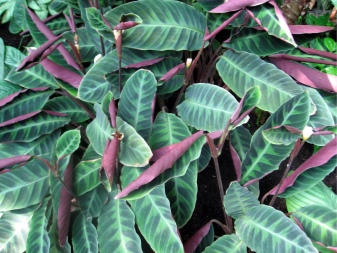
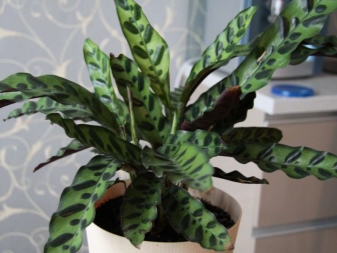
Overview of genera and their species
The arrowroot family has about 400 species. They are divided into 30 genera. The most popular of them are arrowroot, calathea, stromant and ktenantu... Care, as well as maintenance, all of them require approximately the same. Florists note that there are no particular difficulties in growing, but it can still be difficult for beginners.
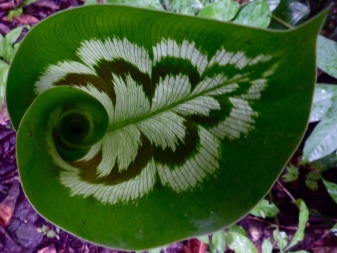

Arrowroot
When it comes to room arrowroot, it is capable of reaching a height of only 20-30 centimeters. In the wild, this plant grows up to 1.5 meters. Among the features, one can note the presence of rather short lodging shoots.
It is the arrowroot that is considered a flower, least of all requiring care. Indoor plants can not always please the owners with flowering. If this happens, the buds are quite small, with petals of pale lilac or white.
The growing season assumes the appearance of 5-6 new leaves. The lifespan of the arrowroot is quite long, if properly cared for. The flower will require transplanting and dividing every 3-4 years.
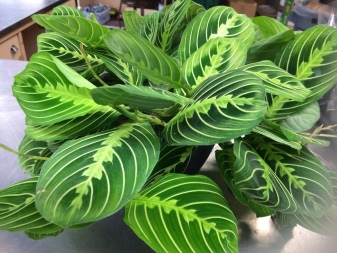
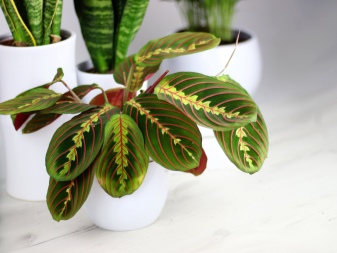
Among indoor plants, there are 7 varieties of arrowroot. Most often, flower growers choose tricolor or two-color, Kerhoven arrowroot or Massange.
Tricolor can be called the most popular. It has leaf plates with bright red veins that are pink underneath. Around the stripes there is a yellowish or pale green halo, spreading in spots to the edges and at the same time becoming darker and darker. Bicolor is distinguished by reddish-brown petioles and slightly wavy edges. There is a small fluff on the bottom of the leaves.
For inexperienced growers, the easiest way is to grow Kerhoven arrowroot. She is the least moody and does not require serious care. However, it looks no less bright and extravagant than other varieties.
More demanding is the Massange variety.Its leaves are covered with very dark spots, and the central vein is light, slightly silvery.
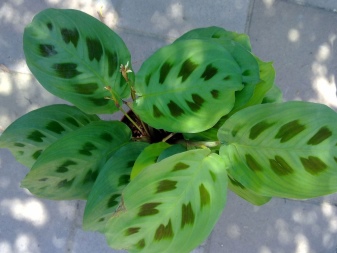
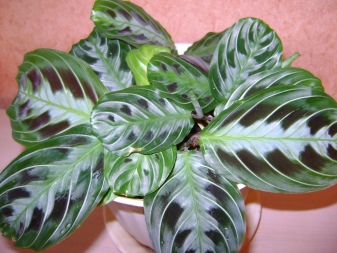
Calathea
This variety has wide leaves with a spectacular and bright pattern of all kinds of shades. The pattern consists of spots and stripes. Such plants look very original, but you will have to take care of their care.
Calathea is quite tall and slender. It can, if desired, be grown in a regular flower pot., however, experts recommend placing plants in a terrarium or organizing a "bottle garden" for them. They are moody enough, they do not tolerate drafts. Very sensitive to what kind of water will be used for irrigation. For active development, they need air with a humidity in the range of 85-100 percent.

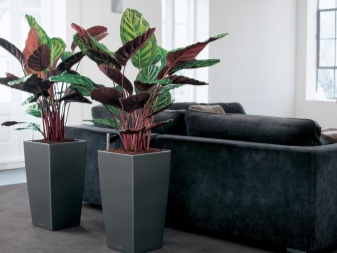
Some varieties react very negatively to the spraying procedure. They cannot be kept under the shower for a long time. They can have both beautiful, original shape and nondescript leaves. However, they are distinguished by bright flowering. The most popular are saffron calathea, Makoya, painted and pinkish-colored.
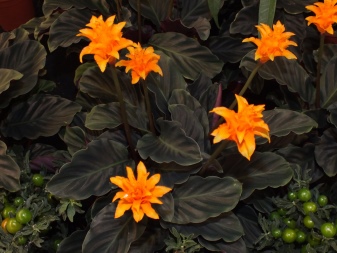
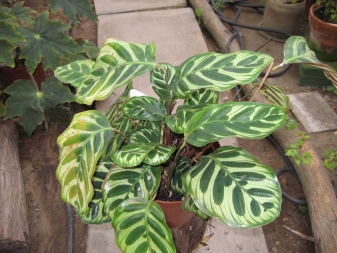
Stromant
Outwardly, this plant resembles arrowroot, but the color of the leaves is closer to the calathea. It can reach a size of 70-80 centimeters in height, while the leaves grow up to 20-35 centimeters. Their background can be anything. Some are distinguished by the variegation or brilliance of satin. The lower part has a burgundy tint.
Stromant can be called a plant for which conditions of maintenance and care are most important. Includes 13 varieties, but few take root at home. The most popular are stromanthus pleasing and blood-red.
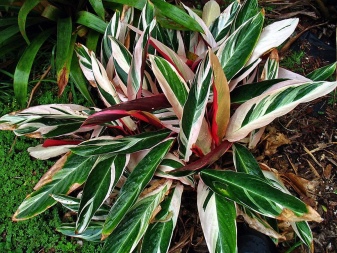
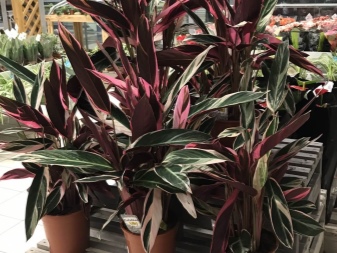
Ktenantu
The leaves of this plant are arranged in a dense rosette, the tiers of which are divided using internodes. I must say that outwardly, the flower resembles a calathea. It is quite whimsical to the conditions of detention, therefore it is not recommended for growing for beginners.
The leaves are rather large, oval or oblong in shape. They are asymmetrical, which is what often differ from other members of the family. They cannot boast of abundant flowering, and the inflorescences do not look very impressive. Among indoor plants, the most popular was grade "Oppenheim".
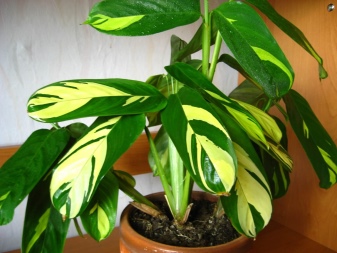
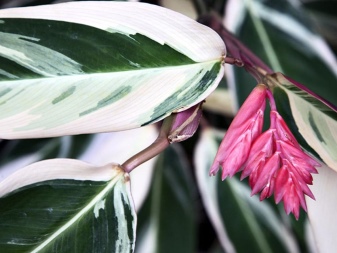
How to take care at home?
Before you buy such a plant for home, you need to make sure that it is completely healthy. In this case, the veins on the leaves are well felt. Experts recommend going shopping in the evening to see a flower with raised leaves.
You need to immediately decide where the plant will be located. After purchase, it is transplanted into a container with soil.
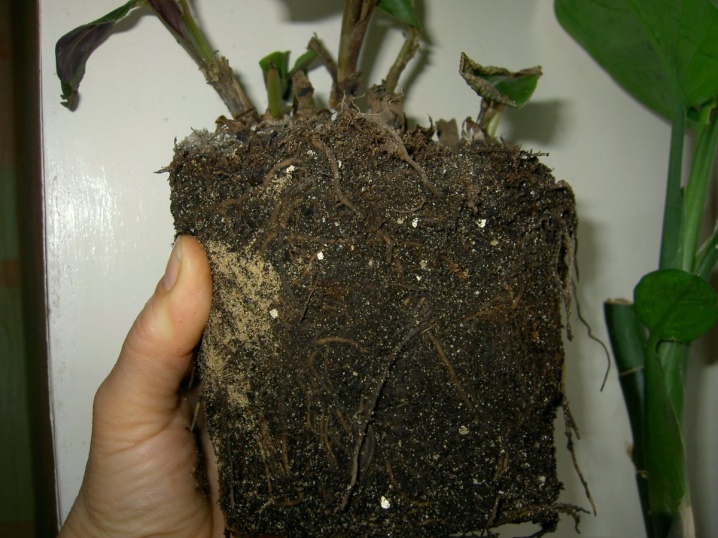
There are a number of rules that every florist who decides to grow a plant of the arrowroot family must be familiar with. The highlights are lighting, moisture levels, and watering.
First of all, let's talk about lighting. Plants prefer mainly bright, but always diffused light. It is not worth placing them on the sunny side, where there is a danger of direct sunlight, as this can lead to burns and dry leaves.
However, in winter it will be necessary to organize additional lighting, which must be organized 16 hours a day. It is best to use a fluorescent lamp. If this is not done, the stems will stretch out, and the leaf plates will become thinner.
Also arrowroot will need moist air. It is best to purchase a special humidifier, then there will be no problems.
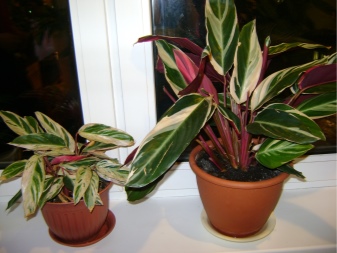
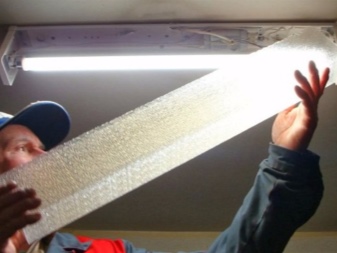
The watering procedure is as follows. First, water is poured into a pot. After it drains into the pan, the liquid is poured out. If it pours directly onto the plant, you must avoid falling on the leaves. Failure to comply with this rule can lead to the appearance of fungus and rotting of the sheet plate. Therefore, if necessary, the greens are carefully wiped with a dry cloth or napkin.
However, these nuances are not the only ones to pay attention to. The transplant procedure is very important. At home, it is recommended to carry out it twice a year.
The plant of this family is distinguished by the presence of small roots, so the container should be shallow and wide enough. It is worth abandoning ceramic pots, since cooling from the windowsill in winter, they can contribute to hypothermia of the roots.
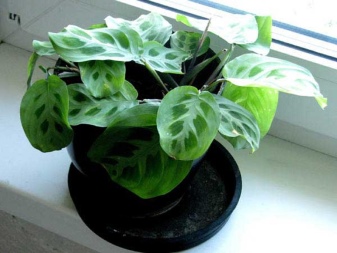
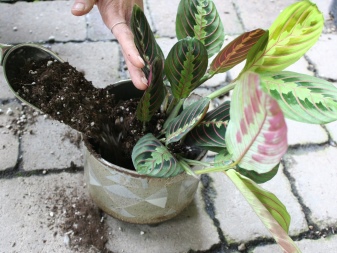
You should also pay attention to the preparation of the soil.... It should contain humus, peat, coniferous and deciduous soil. The addition of charcoal will not harm either. To exclude the occurrence of rot, you will need to organize a good drainage system. Expanded clay, laid out on the bottom of the container, is perfect.
Proper pruning will also contribute to the correct growth of the plant. It can be either hygienic, when dried and affected parts are removed, or for the purpose of forming a crown.


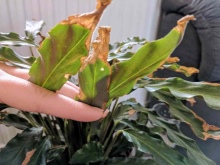
Arrowroot indoor plants are also demanding on the temperature regime. They need constant warmth, and they also do not tolerate drafts. However, the main thing is not to overdo it, overheating will also not be beneficial. The soil temperature in the summer should not fall below 19 degrees, and the environment should not fall below 23-25 degrees. In winter, the apartment should not be colder than 11 degrees.
For transplanting arrowroot indoor plants, see below.



























The comment was sent successfully.